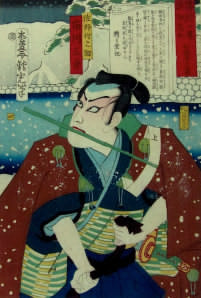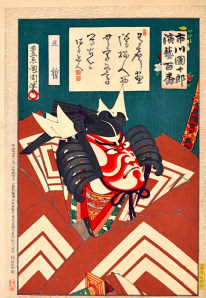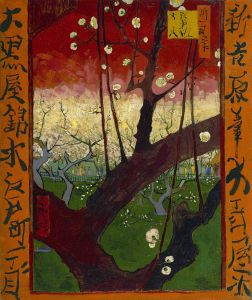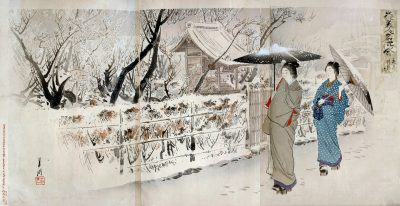Japan art and the last Meiji ukiyo-e flourish
Lee Jay Walker
Modern Tokyo Times

Notable Japanese art forms, from rinpa to ukiyo-e, continue to impact artistically internally and externally for people who adore art. The world of ukiyo-e blessed the Edo Period (1603-1868). However, despite the revolutionary fervor of the Meiji Period (1868-1912), this art form continued to be blessed by an abundance of Meiji artists who kept this art form alive.
Distinguished artists bracketed under Meiji artists of ukiyo-e concerns Chikanobu, Kawanabe Kyosai, Ogata Gekko, Yoshitoshi, Toyohara Kunichika, Utagawa Yoshifuji, Mizuno Toshikata, Ginko Adachi, Kobayashi Kiyochika, and several others. Price mechanism-wise, the art produced was valued – generally – at a lower price than more established Edo Period artists. However, monetary value is deceptive because the factors behind this are several – from longevity to competitiveness and so forth.

The Toshidama Gallery (http://www.toshidama-japanese-prints.com/) comments, “Whilst the date is significant, it is hard to say that prints produced before this date were ‘Edo’ and those made after were ‘Meiji’. There is however a clear trend in both subject matter, style and quality which becomes more apparent as the century progressed. Most striking is the use of colour. With progress came industrialisation and the ability to produce aniline dyes and commercial pigments. The distinctive reds, blues and violets of Meiji prints are hard to miss when compared to the vegetable and organic dyes of the early part of the century. Vibrant and sometimes harsh, only the great artists of the period such as Yoshitoshi and Kunichika were able to create subtlety or sophistication from the new colours. For an artist such as Kunichika, the new reds were the ‘colour of enlightenment’ and their use had political overtones as well as artistic purpose.”
In recent times, several ukiyo-e artists belonging to the Meiji Period appear to be growing in reputation. Unlike established Edo artists who impacted Western artists, the same can’t be said to any degree concerning Meiji artists.

Western artists (Van Gogh above) impacted by ukiyo-e include Pierre Bonnard, Mary Cassatt, Edgar Degas, Paul Gauguin, Toulouse-Lautrec, Claude Monet, Camille Pissarro, Pierre-Auguste Renoir, James Abbot McNeill Whistler, Vincent Van Gogh, and several others.
Meiji artists faced the rapid encroachment of new Western art forms, younger Japanese artists feeling the lore of Paris and other established artistic centers, photography, modernization, new entertainment, the mass upheaval of the Meiji Period that challenged traditionalism, and other factors. However, despite enormous adversity, many Meiji ukiyo-e artists survived financially.

Overall, the ukiyo-e artists of the Meiji Period – some overlap with the late Edo Period – left a lasting legacy that is gradually being recognized to a higher level in artistic circles.
http://www.toshidama-japanese-prints.com/

PLEASE DONATE TO HELP MODERN TOKYO TIMES
Modern Tokyo News is part of the Modern Tokyo Times group
DONATIONS to SUPPORT MODERN TOKYO TIMES – please pay PayPal and DONATE to sawakoart@gmail.com
http://moderntokyotimes.com Modern Tokyo Times – International News and Japan News
https://www.pinterest.co.uk/moderntokyotimes/ Modern Tokyo Times is now on PINTEREST
http://sawakoart.com – Sawako Utsumi personal website and Modern Tokyo Times artist
https://moderntokyonews.com Modern Tokyo News – Tokyo News and International News
PLEASE JOIN ON TWITTER
https://twitter.com/MTT_News Modern Tokyo Times
PLEASE JOIN ON FACEBOOK